GrabCAD

British Telecom, Telecom Tower, The London Tower, Sheet metal puzzle, 3d puzzle, metalcraftdesign
by GrabCAD
Last crawled date: 1 year, 10 months ago
First off, I'd like to acknowledge https://grabcad.com/hans.de.ridder-1 for his awesome version of https://grabcad.com/library/telecom-tower-1. I "LIKED" it and so should you...
Spoiler..".Learn here..."
The BT Tower is a communications tower located in Fitzrovia, London, owned by BT Group. It has been previously known as the Post Office Tower, the London Telecom Tower and the British Telecom Tower. The main structure is 177 metres (581 ft) high, with a further section of aerial rigging bringing the total height to 191 metres (627 ft). It should not be confused with the BT Centre (the global headquarters of BT).
The tower was commissioned by the General Post Office (GPO). Its primary purpose was to support the microwave aerials then used to carry telecommunications traffic from London to the rest of the country, as part of the British Telecom microwave network.
It replaced a much shorter steel lattice tower which had been built on the roof of the neighbouring Museum telephone exchange in the late 1940s to provide a television link between London and Birmingham. The taller structure was required to protect the radio links' "line of sight" against some of the tall buildings in London then in the planning stage. These links were routed via other GPO microwave stations at Harrow Weald, Bagshot, Kelvedon Hatch and Fairseat, and to places like the London Air Traffic Control Centre at West Drayton.
The tower was designed by the architects of the Ministry of Public Building and Works: the chief architects were Eric Bedford and G. R. Yeats. Typical for its time, the building is concrete clad in glass. The narrow cylindrical shape was chosen because of the requirements of the communications aerials: the building will shift no more than 25 centimetres (10 in) in wind speeds of up to 150 km/h (95 mph). Initially the first sixteen floors were for technical equipment and power. Above that was a 35 metre section for the microwave aerials, and above that were six floors of suites, kitchens, technical equipment and finally a cantilevered steel lattice tower. To prevent heat build-up the glass cladding was of a special tint. The construction cost was £2.5 million.
Construction began in June 1961, and owing to the building's height and its having a tower crane jib across the top virtually throughout the whole construction period, it gradually became a very prominent landmark that could be seen from almost anywhere in London. In August 1963 there was even a question raised in Parliament about the crane. Doctor Reginald Bennett MP asked the Minister of Public Building and Works how, when the crane on the top of the new Post Office tower had fulfilled its purpose, he proposed to remove it. Mr Geoffrey Rippon replied, "This is a matter for the contractors. The problem does not have to be solved for about a year but there appears to be no danger of the crane having to be left in situ."
The tower was topped out on 15 July 1964 and officially opened by the then Prime Minister Harold Wilson on 8 October 1965. The main contractor was Peter Lind & Co Ltd.
Upon its completion, the tower was designated an official secret and did not appear on Ordnance Survey maps until after it was officially revealed by Kate Hoey under parliamentary privilege in 1993, despite being a 177-metre (581 ft) tall structure in the middle of central London that was open to the public for about 15 years.
The tower was originally designed to be just 111 metres (364 ft), and its foundations are sunk down through 53 metres of London clay and are formed of a concrete raft 27 metres square, a metre thick, reinforced with six layers of cables on top of which sits a reinforced concrete pyramid.[7]
The tower was officially opened to the public on 16 May 1966 by Tony Benn and Billy Butlin. As well as the communications equipment and office space there were viewing galleries, a souvenir shop, and a rotating restaurant, the "Top of the Tower", on the 34th floor, operated by Butlins. It made one revolution every 22 minutes. An annual race up the stairs of the tower was established and the first race was won by UCL student Alan Green. Tony Benn also designated the tower a mascot of UCL after lobbying by students. Comedian Pat Condell washed dishes in the kitchen for his first job.[8]
A bomb, responsibility for which was claimed by the Provisional IRA,[9] exploded in the roof of the men's toilets at the Top of the Tower restaurant on 31 October 1971. The restaurant was closed to the public for security reasons in 1980, the year in which the Butlins' lease eventually expired. Public access to the building ceased in 1981. The Tower is sometimes used for corporate events, but the closure of the Tower restaurant to the public means London has no revolving restaurant.
P.s.
In Alan Moore's graphic novel V for Vendetta the tower is headquarters for both the "Eye", and the "Ear", the visual and audio surveillance divisions of the government. The tower is destroyed through sabotage. It is also featured in the film adaptation although it is not destroyed. It is renamed Jordan Tower in the film and is the headquarters of the "British Television Network"
Learn more @:
http://en.wikipedia.org/wiki/BT_Tower
This model/puzzle was a fun 2 week evening project that I hope you all enjoy...
As always I grab screenshots as I go to both show the design and show the methodolgy used for anyone that wants to get an idea how it's designed... (Sorry as always for too many pics...)
As I Go...
https://grabcad.com/library/british-telecom-telecom-tower-the-london-tower-sheet-metal-puzzle-3d-puzzle-metalcraftdesign-1/files/As%20I%20Go.rar
As always... Your feedback, renderings and "LIKES" are more than welcome!
Thanks, hope you all like!
Dick Lowe
Spoiler..".Learn here..."
The BT Tower is a communications tower located in Fitzrovia, London, owned by BT Group. It has been previously known as the Post Office Tower, the London Telecom Tower and the British Telecom Tower. The main structure is 177 metres (581 ft) high, with a further section of aerial rigging bringing the total height to 191 metres (627 ft). It should not be confused with the BT Centre (the global headquarters of BT).
The tower was commissioned by the General Post Office (GPO). Its primary purpose was to support the microwave aerials then used to carry telecommunications traffic from London to the rest of the country, as part of the British Telecom microwave network.
It replaced a much shorter steel lattice tower which had been built on the roof of the neighbouring Museum telephone exchange in the late 1940s to provide a television link between London and Birmingham. The taller structure was required to protect the radio links' "line of sight" against some of the tall buildings in London then in the planning stage. These links were routed via other GPO microwave stations at Harrow Weald, Bagshot, Kelvedon Hatch and Fairseat, and to places like the London Air Traffic Control Centre at West Drayton.
The tower was designed by the architects of the Ministry of Public Building and Works: the chief architects were Eric Bedford and G. R. Yeats. Typical for its time, the building is concrete clad in glass. The narrow cylindrical shape was chosen because of the requirements of the communications aerials: the building will shift no more than 25 centimetres (10 in) in wind speeds of up to 150 km/h (95 mph). Initially the first sixteen floors were for technical equipment and power. Above that was a 35 metre section for the microwave aerials, and above that were six floors of suites, kitchens, technical equipment and finally a cantilevered steel lattice tower. To prevent heat build-up the glass cladding was of a special tint. The construction cost was £2.5 million.
Construction began in June 1961, and owing to the building's height and its having a tower crane jib across the top virtually throughout the whole construction period, it gradually became a very prominent landmark that could be seen from almost anywhere in London. In August 1963 there was even a question raised in Parliament about the crane. Doctor Reginald Bennett MP asked the Minister of Public Building and Works how, when the crane on the top of the new Post Office tower had fulfilled its purpose, he proposed to remove it. Mr Geoffrey Rippon replied, "This is a matter for the contractors. The problem does not have to be solved for about a year but there appears to be no danger of the crane having to be left in situ."
The tower was topped out on 15 July 1964 and officially opened by the then Prime Minister Harold Wilson on 8 October 1965. The main contractor was Peter Lind & Co Ltd.
Upon its completion, the tower was designated an official secret and did not appear on Ordnance Survey maps until after it was officially revealed by Kate Hoey under parliamentary privilege in 1993, despite being a 177-metre (581 ft) tall structure in the middle of central London that was open to the public for about 15 years.
The tower was originally designed to be just 111 metres (364 ft), and its foundations are sunk down through 53 metres of London clay and are formed of a concrete raft 27 metres square, a metre thick, reinforced with six layers of cables on top of which sits a reinforced concrete pyramid.[7]
The tower was officially opened to the public on 16 May 1966 by Tony Benn and Billy Butlin. As well as the communications equipment and office space there were viewing galleries, a souvenir shop, and a rotating restaurant, the "Top of the Tower", on the 34th floor, operated by Butlins. It made one revolution every 22 minutes. An annual race up the stairs of the tower was established and the first race was won by UCL student Alan Green. Tony Benn also designated the tower a mascot of UCL after lobbying by students. Comedian Pat Condell washed dishes in the kitchen for his first job.[8]
A bomb, responsibility for which was claimed by the Provisional IRA,[9] exploded in the roof of the men's toilets at the Top of the Tower restaurant on 31 October 1971. The restaurant was closed to the public for security reasons in 1980, the year in which the Butlins' lease eventually expired. Public access to the building ceased in 1981. The Tower is sometimes used for corporate events, but the closure of the Tower restaurant to the public means London has no revolving restaurant.
P.s.
In Alan Moore's graphic novel V for Vendetta the tower is headquarters for both the "Eye", and the "Ear", the visual and audio surveillance divisions of the government. The tower is destroyed through sabotage. It is also featured in the film adaptation although it is not destroyed. It is renamed Jordan Tower in the film and is the headquarters of the "British Television Network"
Learn more @:
http://en.wikipedia.org/wiki/BT_Tower
This model/puzzle was a fun 2 week evening project that I hope you all enjoy...
As always I grab screenshots as I go to both show the design and show the methodolgy used for anyone that wants to get an idea how it's designed... (Sorry as always for too many pics...)
As I Go...
https://grabcad.com/library/british-telecom-telecom-tower-the-london-tower-sheet-metal-puzzle-3d-puzzle-metalcraftdesign-1/files/As%20I%20Go.rar
As always... Your feedback, renderings and "LIKES" are more than welcome!
Thanks, hope you all like!
Dick Lowe
Similar models
3dwarehouse
free

The BT tower London (407 KB)
... national headquarters of bt), which is located at 81 newgate street, london. #60s #british #bt #landmark #london #telecom #tower
3dwarehouse
free
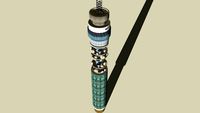
The BT Tower, London - update (398 KB)
... national headquarters of bt), which is located at 81 newgate street, london. #60s #british #bt #landmark #london #telecom #tower
grabcad
free

Башня London
...ginal https://grabcad.com/library/british-telecom-telecom-tower-the-london-tower-sheet-metal-puzzle-3d-puzzle-metalcraftdesign-1
3dwarehouse
free

BT Tower, London
...the building is a 360° rotating restaurant. the tower is owned by british telecom. #british_telecom #bt #bt_tower #camden #london
cg_trader
free

BT Tower, London
... a 360° rotating restaurant. the tower is owned by british telecom. british telecom bt bt tower camden london exterior skyscraper
3dwarehouse
free

London Telecom Tower (BT Tower)
...london telecom tower (bt tower)
3dwarehouse
the bt tower is a capital tower of london,16 poschodi,191 meters #bt #telecom #tower
3dwarehouse
free

Tower 42 (NatWest Tower), London
...nal westminster tower (commonly known as the natwest tower), having been built to house natwest's international headquarters.
3dwarehouse
free
![British Telecom Plug BT]](/t/7812745.jpg)
British Telecom Plug BT]
...british telecom plug bt]
3dwarehouse
british telecom plug #british_telecom #bt #plug
3dwarehouse
free

BT Tower, Birmingham
...to the tower. the tower is known for being home to roosting peregrines. #birmingham #british_telecom #bt_tower #post_office_tower
3dwarehouse
free

Telecom Tower
...tower's title of birmingham's tallest. #birmingham #britain #british #bt #enlgand #telecom #telecommunications #tower #uk
Metalcraftdesign
thingiverse
free

Manticore
...thingiverse made a manticore with an ass***le for a facehttps://grabcad.com/library/porcupine-sheet-metal-puzzle-rodent-3d-model-3d-puzzle-metalcraftdesign1https://cults3d.com/en/3d-model/art/gone-mad ...
grabcad
free

Centipede, millipede, sheet metal puzzle, metalcraftdesign, 3d model, puzzle, insect
... from symmetry..
see him at the http://grabcad.com/library/display-stainless-steel-shelving-unit-for-the-bugs-metalcraftdesign-1
grabcad
free

Third Hand 3d Puzzle Maker, sheetmetal puzzle design, Metalcraftdesign
...gn. this system works well to hold the critters while the glue hardens.
likes and conceptual ideas are more than welcome!
dlowe
grabcad
free

Dragon Fire MetalcraftDesign
...ange; to be perfect is to change often."
just doodling around...please, if you "like" hit the button...
dick lowe
grabcad
free

Monarch Butterfly, metal puzzle, bugs, 3d model, puzzle, sheet metal, metalcraftdesign
... drop of krazy glue.
see him at the "colosseum"display, stainless steel shelving unit...for the bugs, metalcraftdesign
grabcad
free

Pegasus bookends, sheetmetal, metalcraftdesign
...al) would be greatly appreciated!
thank you to:
http://grabcad.com/krista.casal-1 for
http://grabcad.com/library/three-books
grabcad
free

F-15D Military Jet Business card holder, 3d puzzle, metalcraftdesign
...ness card holder, 3d puzzle tab and slot .060" thick material. to be assembled with a little "krazy glue".
enjoy!
grabcad
free

Nasty Scorpion sheet metal puzzle, scorpions, 3d model, puzzle, sheetmetal, metalcraftdesign
...the second evolution of the scorpion, even meaner, nastier!
please "like" and render at will!
images coming tomorrow!
grabcad
free

Mosquito, insect, bugs, 3d model, puzzle, sheetmetal, metalcraftdesign
...of krazy glue.
see him at the "colosseum"http://grabcad.com/library/display-stainless-steel-shelving-unit-for-the-bugs
grabcad
free

Guillotine, Cigar cutter, sheetmetal decoration, metalcraftdesign
...cutter.
tabbed and slotted .060" or .12 " welded assembly.
hope you like!
renderings, likes and suggestions welcome!
Telecom
cg_studio
$49
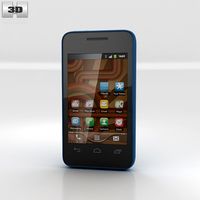
Telecom T40103d model
...4010
.max .obj .mb .lwo .fbx .c4d .3ds - telecom t4010 3d model, royalty free license available, instant download after purchase.
3d_export
$49

Telecom T4010 3D Model
... 3g android droid smartphone cell phone mobile cellular tft lcd touchscreen touch
telecom t4010 3d model humster3d 87814 3dexport
cg_studio
$69
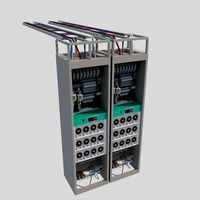
Telecom Power System3d model
...st computer
.obj .fbx .3ds .max - telecom power system 3d model, royalty free license available, instant download after purchase.
cg_studio
$69

Telecom Power System3d model
...st computer
.max .fbx .3ds .obj - telecom power system 3d model, royalty free license available, instant download after purchase.
cg_studio
$69
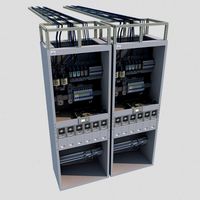
Telecom power system3d model
...l
cgstudio
.obj .fbx .3ds .max - telecom power system 3d model, royalty free license available, instant download after purchase.
cg_studio
$69

Telecom Power System3d model
...l
cgstudio
.max .obj .fbx .3ds - telecom power system 3d model, royalty free license available, instant download after purchase.
humster3d
$40

3D model of Telecom T4010
...buy a detailed 3d model of telecom t4010 in various file formats. all our 3d models were created maximally close to the original.
cg_studio
$108

Telecom Power Center Room3d model
...l
cgstudio
.fbx .3ds .max - telecom power center room 3d model, royalty free license available, instant download after purchase.
cg_studio
$69

Telecom Power Center Room 023d model
...gstudio
.fbx .3ds .max - telecom power center room 02 3d model, royalty free license available, instant download after purchase.
3d_export
$5
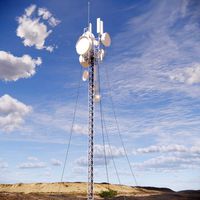
Sci-fi telecom Tower
...ngine that you use. the scale is 1:1 with the dimension given. can be use as a prop or backdrop or anything that fits your needs!
British
3d_ocean
$9

British Clock
...british clock
3docean
british clock interior
quality model british clock for your interior.
3d_export
$6
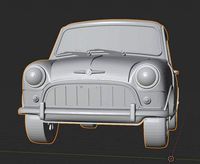
british car
...british car
3dexport
british car
3ddd
$1

British flag
...british flag
3ddd
флаг
british flag
3d_ocean
$5

Decorative british box
...decorative british box
3docean
box british decorative
decorative. quality model british box
turbosquid
$10
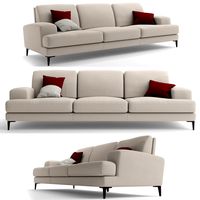
British sofa
...squid
royalty free 3d model british sofa for download as max on turbosquid: 3d models for games, architecture, videos. (1435097)
turbosquid
$5
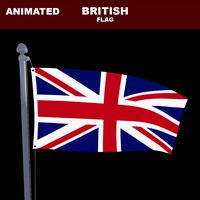
British Flag
...squid
royalty free 3d model british flag for download as max on turbosquid: 3d models for games, architecture, videos. (1332182)
3ddd
$1

Kare Very British
...
szerokość (cm):54
wysokość (cm):79
głębokość (cm):59
econo very british
szerokość (cm):49
wysokość (cm):99
głębokość (cm):58
3ddd
$1

British Collection
... чашка
british collection.
в наборе: кресло, две подушки, картина, чашка.
3ds max 2011,2014,obj + textures
turbosquid
$30

British Policewoman
... available on turbo squid, the world's leading provider of digital 3d models for visualization, films, television, and games.
turbosquid
$15

British Guitar
... available on turbo squid, the world's leading provider of digital 3d models for visualization, films, television, and games.
Puzzle
3d_ocean
$5

Puzzle
... can rotate, move or delete them easily. to change the puzzle image just replace the ‘puzzle_texture.jpg’ in the textures folder.
archibase_planet
free

Puzzle
...puzzle
archibase planet
puzzle toy enigma
puzzle n240111 - 3d model (*.gsm+*.3ds) for interior 3d visualization.
3d_export
$10

puzzle
...puzzle
3dexport
this puzzle model consists of separate parts. suitable for 3d printing and further play.
3ddd
$1

pillow-puzzle
... пазлы , пазл , подушка
pillow-puzzle
3ddd
$1

Porada Puzzle
... журнальный , кофейный
стол журнальный porada puzzle 1000х500
3ddd
$1

Puzzle sofa
...puzzle sofa
3ddd
модульный
puzzle sofa
3d_ocean
$4

Puzzle Cube
...puzzle cube
3docean
clean cube fun puzzle rubik simple toy
this is a very clean and simple puzzle cube.
3d_ocean
$2

Jigsaw Puzzle
...s puzzle tiles toy
simple jigsaw puzzle model. modeled nicely in 3ds max and include mulitiple format (.obj, .max, .3ds and.fbx).
turbosquid
$39

Puzzle
... available on turbo squid, the world's leading provider of digital 3d models for visualization, films, television, and games.
turbosquid
$20
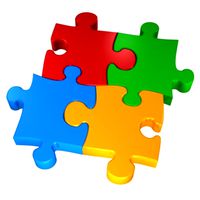
puzzles
... available on turbo squid, the world's leading provider of digital 3d models for visualization, films, television, and games.
London
3ddd
free

LONDON
...london
3ddd
london
шкаф "london"
3ddd
$1

LONDON
...london
3ddd
london , тумба
приставка к письменному столу "london"
3ddd
$1

LONDON
...london
3ddd
london , письменный
письменный стол с брифингом "london"
3ddd
$1

Диван London
...ndon
3ddd
versace home , london
диван london от итальянского производителя versace home.
3ddd
$1

Royal London
...on
3ddd
royal london , наручные
http://watch.24k.ua/royal-london/41087-01.html
turbosquid
$199

London
...y free 3d model london for download as 3ds, max, obj, and fbx on turbosquid: 3d models for games, architecture, videos. (1219244)
3ddd
$1

London
...ndon, от meblissimo, max12 + fbx, рендер - vray2.00.03 + материал, текстуры.
модель размещена в категории фри по желанию автора.
3ddd
$1
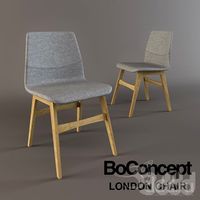
BoConcept London
...boconcept london
3ddd
boconcept
producent: boconcept
model: london chair
www.boconcept.com
3d_ocean
$20

London Eye
...ennium wheel is the tallest ferris wheel in europe at a giant 135 metres tall!. it’s more popular than the taj mahal and the p...
design_connected
$11
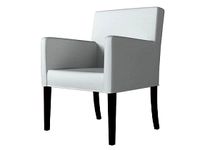
Chaise London
...chaise london
designconnected
ph diffusion chaise london armchairs computer generated 3d model. designed by n/a.
Sheet
archibase_planet
free

Sheet
...et
archibase planet
baking tray baking sheet griddle
cooker sheet n180708 - 3d model (*.gsm+*.3ds) for interior 3d visualization.
3d_export
$5

sheet holder
...sheet holder
3dexport
sheet holder
3d_export
$15
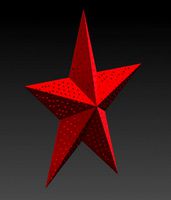
sheet metal star
...sheet metal star
3dexport
sheet metal star
turbosquid
free
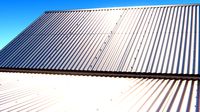
tin sheet
...eet
turbosquid
free 3d model tin sheet for download as blend on turbosquid: 3d models for games, architecture, videos. (1278630)
turbosquid
$1

Corrugated sheets
...
royalty free 3d model corrugated sheets for download as obj on turbosquid: 3d models for games, architecture, videos. (1380247)
archive3d
free
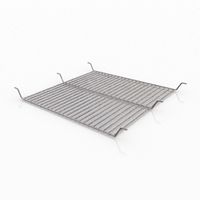
Sheet 3D Model
...king sheet griddle
cooker sheet n180708 - 3d model (*.gsm+*.3ds) for interior 3d visualization.
turbosquid
$2

Sheet Drum
... free 3d model sheet drum for download as blend, fbx, and obj on turbosquid: 3d models for games, architecture, videos. (1702975)
3ddd
$1
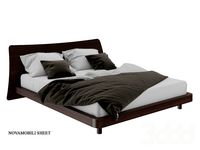
Novamobili sheet
... постельное белье
3d модель кровати novamobili sheet.
размеры:
ш - 1800 мм
д - 2200 мм
в - 860 мм
turbosquid
$65
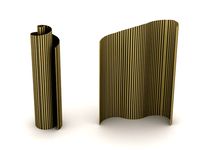
sheet(w713)
... available on turbo squid, the world's leading provider of digital 3d models for visualization, films, television, and games.
turbosquid
$3

sheet metal
... available on turbo squid, the world's leading provider of digital 3d models for visualization, films, television, and games.
Tower
archibase_planet
free
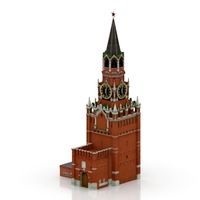
Tower
...kremlin tower spasskaya tower
tower kremlin spasskaya tower n120615 - 3d model (*.gsm+*.3ds+*.max) for exterior 3d visualization.
archibase_planet
free
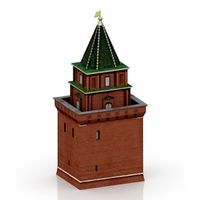
Tower
...r kremlin tower petrovskaya tower
tower petrovskaya kremlin n120615 - 3d model (*.gsm+*.3ds+*.max) for exterior 3d visualization.
archibase_planet
free

Tower
...ino-eleninskaya tower
tower constantino eleninskaya kremlin n120615 - 3d model (*.gsm+*.3ds+*.max) for exterior 3d visualization.
archibase_planet
free
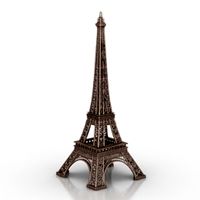
Tower
...tower
archibase planet
tower statuette eiffel tower
tower decor n180914 - 3d model (*.gsm+*.3ds) for interior 3d visualization.
archibase_planet
free
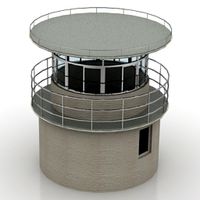
Tower
...lanet
tower construction building
tower polices post street tower n110913 - 3d model (*.gsm+*.3ds) for exterior 3d visualization.
3d_export
$5
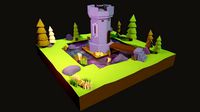
tower
...tower
3dexport
a fortified tower with a moat.
archibase_planet
free

Tower
...tower
archibase planet
building tower construction
tower n300712 - 3d model (*.gsm+*.3ds) for exterior 3d visualization.
archibase_planet
free
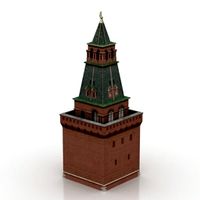
Tower
...uilding kremlin construction
tower 2 vtoraya bezymyannaya kremlin n100914 - 3d model (*.gsm+*.3ds) for exterior 3d visualization.
archibase_planet
free
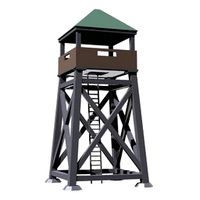
Tower
...tower
archibase planet
forcetower tower
forcetower - 3d model for interior 3d visualization.
archibase_planet
free

Transmission tower
...lectricity pylon lattice tower framework tower
transmission tower n121015 - 3d model (*.gsm+*.3ds) for exterior 3d visualization.
Metal
3d_ocean
$10

Metal Barrel
...metal barrel
3docean
barrel barrels metal metal barrel wood barrel
metal barrel
3d_ocean
$18
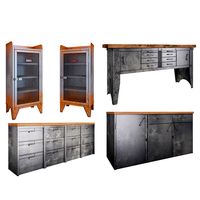
Metal Furniture
...metal furniture
3docean
design desk indoor industrial metal metal furniture restoration table
metal furniture 3d model
3d_export
$5

metal table
...metal table
3dexport
metal table.blend
3d_export
$5
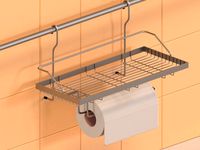
Metal Shelf
...metal shelf
3dexport
metal shelf
3d_export
free

metal detector
...metal detector
3dexport
metal detector
3ddd
$1
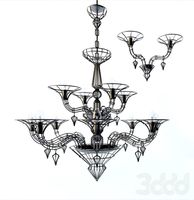
metal lux
...metal lux
3ddd
dedalo , metal lux
люстра и бра metal lux коллекция dedalo.
3ddd
$1
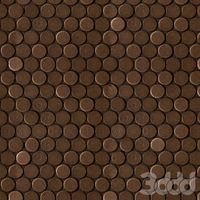
bonded metal
...bonded metal
3ddd
https://www.forms-surfaces.com/bonded-metal
boded tiled metal
3ddd
$1
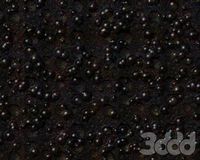
Metal
...metal
3ddd
1280-1024 бесшовный 8-)
3d_export
$5

cgaxis metal
...cgaxis metal
3dexport
notebook cgaxis metal
3d_export
free

fance metal
...fance metal
3dexport
rusty metal fance
